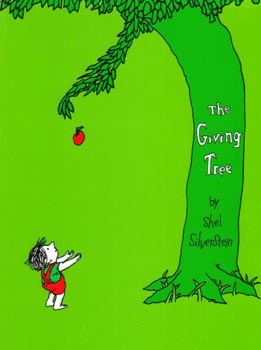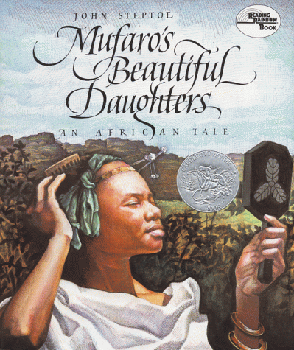|
The process of learning to read is a long and difficult one, both for children and their teachers. It includes many steps for children, from being read to as toddlers, to first reading beginning picture books based on familiarity, to truly understanding enough about phonetics, sentence structure, and vocabulary to read virtually anything on their own. However, when teaching a child to read through this multidimensional and years long process, the most widely used and, in fact, most effective and important tool is the picture book.
From The Giving Tree, copyright Harper and Row, 1964. Picture books, with their simple words, easy to follow storylines, and bright and entertaining illustrations are the most frequently read type of book by children learning to read. (Spitz 3) To a child, pictures communicate on a more natural level, displaying in basic, graphic form what the text describes. Author Perry Nodelman explains this when he states that the illustrations in picture books, “‘illustrate' the text – that is they purport to show us what is meant by the words, so that we come to understand the objects and actions the words refer to in terms of the qualities of the images that accompany them.” (Hunt 72) In this way, picture books help children not only to read the words as they see the accompanying image but also to better comprehend the text. It is for these reasons that we have chosen to use an online, interactive picture book as an example of how to teach children to read.
From Mufaro's Beautiful Daughters, copyright Lothrop, Lee, and Shepard Books, 1987. Picture books, however, are not limited to simply teaching children to read. While entertaining kids, they also teach many other lessons. While many picture books are based on folk tales with implied morals, even books without any educational intent leave the reader with new insights and impressions. The young audience that picture books are directed at is inexperienced in reading and in life. Nodelman again puts it best when he says that, “picture books are a significant means by which we integrate young children into the ideology of our culture.” (Hunt 73) They teach children about their world as well as how to think about and understand themselves and others. This can include lessons about social hierarchies, acceptable situational behavior including actions and their consequences, and multicultural experiences. [ Back ] [ Research Home] |
| Home | Background Research | Activities | Resources | Works Cited | About Us |

